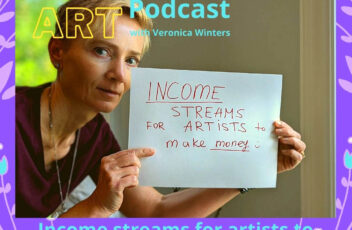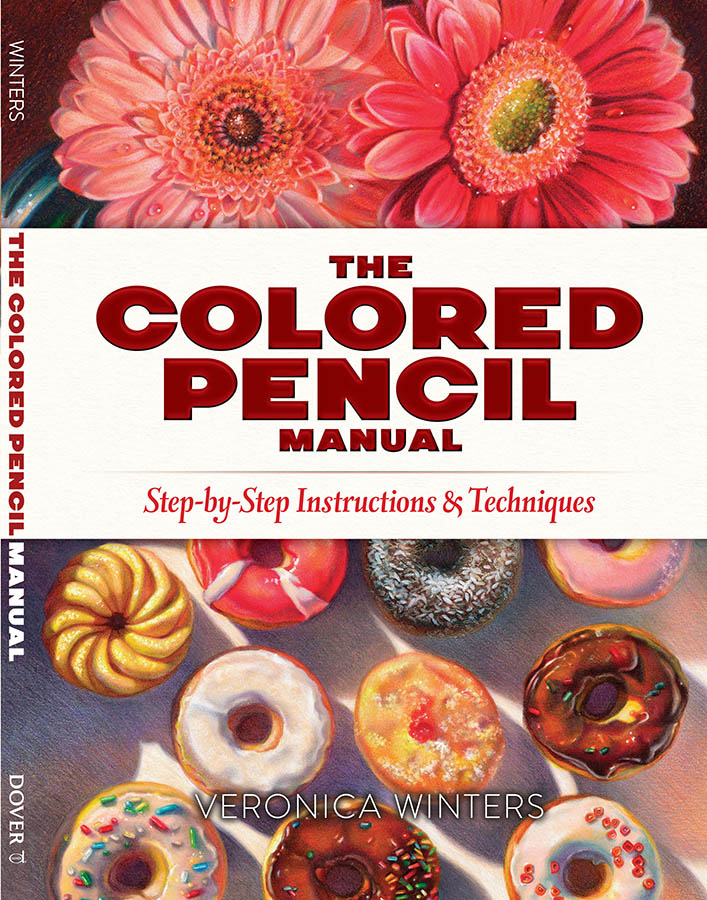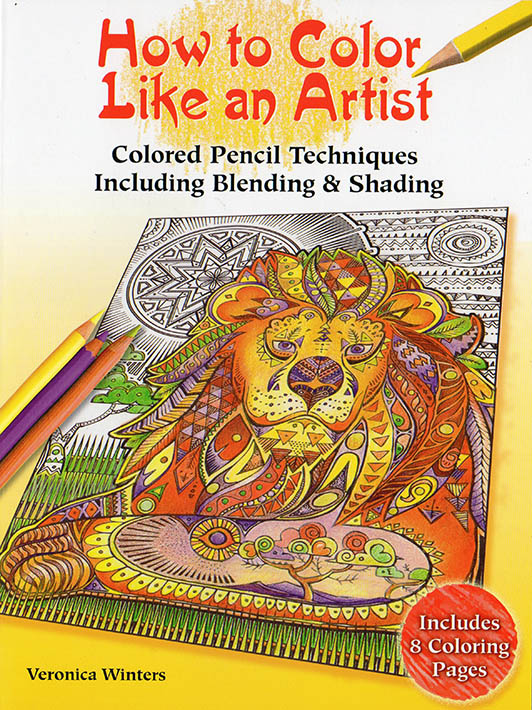We must make money to make more art! It’s difficult for artists to think like a business because our motivation is not to make money rather to create something beautiful. But life is expensive these days and we must make money to make as much art as possible! We must make art to fill this world with emotional beauty, which shouldn’t come at our own expense and endless sacrifice.
Most artists want to sell in a gallery so we don’t have to deal with the art sales. But small and mid range galleries barely cover their costs. I worked with several art galleries locally that disappeared because their overhead costs were way over their revenue. If you find a good commercial gallery, you must consider it as a partnership not to undercut the owner if you’re approached to sell the represented art direct to your customer.
Art doesn’t sell on its own when you start out. Don’t wait to be discovered! Have a very active presence both online and offline to sell your art direct to your clients.
Veronica Winters
Income streams for artists
Promotion
Always assume responsibility to promote your art online, offline and anywhere in between. Use local and national magazines and newspapers to put your art in front of people. You must be of interest to the writer or magazine, so pitch an engaging story on a particular topic instead of writing ‘hey-look-at-my-art’ email. Newspaper journalists like to print artists who have a strong connection to the local community. They usually cover local events that benefit the community. Write a short email with a paragraph how your art benefits others.
Fan base
Focus on building your fan base or community around you – people who like, support and buy your art or service from you. This is not about begging, forcing or making them to buy. It’s about finding real fans who enjoy your work on their wall and, want to support you.
Passive income streams
Now let’s look at some income streams for you to consider to make money as an artist. There is passive income as well as income coming per hours spent working on a job that can be compare to having a regular job.
#1. Selling digital products
You can be selling books and digital products/downloads explaining your painting techniques, or sales strategies or grant writing knowledge- something of interest and value that other artists need to know and you’re good at. You can sell these digital products on Amazon kindle, your web store, Instagram or other social platform.
These digital pdf downloads can sell on its own without active promotion but these sales would be small and inconsistent. Writing time can vary greatly to create a digital asset. In my case it takes up to a year to write one book).
Printed books industry is declining rapidly along with digital books and art magazines. However, if you create and manage a successful book launch, your book may become a bestseller. I learned about this strategy many years later so I didn’t have a chance to implement it.
Launch strategy to sell books on Amazon
The strategy is to have a strong base of at least a hundred top fans who write a book review at the launch day when the book goes live on Amazon. You must collect as many reviews as possible on the launch day to boost the algorithm and sales of your book. You must give something in return to people who write reviews (digital book file or something else). I didn’t know about this strategy when I began selling books on Amazon a decade ago. I simply listed them on Kindle. The sales were going well on their own years ago but this industry declined sharply and I get less than $300 a year from it now. This doesn’t count for my royalties coming from my latest two books published by Dover. I’m paid in royalties direct from this company every 6 months and it’s 4 times more than my sales on Kindle.
#2. Selling courses
It’s a booming industry. I think the decline of the printed book industry relates to the boom in this one.
Let’s look at your investment of time vs. the benefit of having your video course up and running. I spent an insane amount of time creating my first comprehensive course in colored pencil drawing. It took me almost a year to record, edit, narrate and put it all together. I probably overdid it because most courses are between 1-2 hours long and I made 18 lessons of 1hr classes. So it depends how much time you want to invest into your course design. You must know how to record and edit your videos. Outsourcing is possible of course and in this case you have to set a budget for that.
Let’s look at your expertise vs. a quick way to make money. Today we can pick from thousands of courses. Why? Because anyone can make a course. The quality of the course varies greatly. Usually the reviews can spot strengths and weaknesses of the creator. It doesn’t mean you can’t make your own course. Think what value you give to your customer to design your video course. If you’re not sure, pay attention what people ask you about most often and consider making the course on this topic.
A course won’t sell on its own without marketing if you list it on your own platform. Some aggregate platforms like Skillshare, Udemy, Domestika already have students and traffic and the companies spend their money advertising to bring more students in. So if you upload your course to these platforms (which is free), you’ll get reasonable traffic to your course, which would very monthly. These companies take a substantial cut from your sales. But you can upload your course to all these free platforms and get paid from all of them producing just one class.
To list your course with a full control over its price and sales, you can use teachable platform. However you pay quite a lot in yearly fees up front $348-$3000 /year for maintenance of your courses. That’s regardless your sales or profit. Plus they take a cut from every sale you make, which depends on your payment plan. You do have an option to start with a free plan listing 1 course. I love this platform because customer service is great and they take care of all transactions, taxes and other issues that may arise especially selling courses internationally. An alternative to Teachable is Samcart or Thrivecart. Pricing starts at $49 per month. And I’m sure there are many more platforms available for creators now.
To sell courses in volume you must have some form of marketing in place or active following to promote it. Otherwise your sales would be small and inconsistent. A sales funnel should be in place to attract new customers to buy your courses.
#3. Selling merchandise printed on demand
Selling merchandise printed on demand is trickier than you think. Everyone talks about how great it is to sell prints and get paid but it’s not that simple. No one talks about it. Despite the ease of opening your store and uploading files, you’re stuck with the same problem – low or zero traffic to your store front when there’s no active community around you.
Let’s look at time spent to open your print shop vs. the traffic problem.
Again your success in sales of prints relates directly to your marketing effort, engagement and your following on social platforms. New people can find you via SEO to buy commercial art listed on third party platforms like Society 6 or Red Bubble. To be successful, you must do a lot of research first. Research long tale keywords for the product you want to make using Ubersuggest. You need to understand what’s popular and trending in your niche (use Google trends) to create a commercially successful product. That’s one of the reasons why some artists sell prints like hotcakes and others don’t. Look at top products selling on Society 6, Red Bubble, Etsy to figure out what you can offer that’s better. Price point matters selling merchandise. Start researching your competition to see what they’re doing and how they are pricing their work.
All content on my site is copyrighted but you’re welcome to share this entire article with your friends!
Check out my art shop here: https://veronicasart.com/shop/
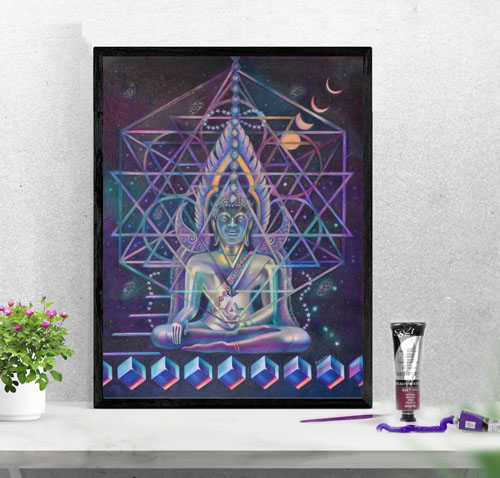
Active income streams
These are major passive income streams. Now let’s look at the active income streams. The following strategies require your ability to communicate and connect with people, offering something of value to them.
#4. Teaching art
As artist you’re in a unique position to to teach art online, off-line, in private lessons, and group classes even if you don’t have a college degree. You can organize lucrative cruise workshops or workshops in a beautiful vacation spots to boost your art income. That’s always been a lion share of my work and income that’s fairly consistent and can be compared to having a full-time job. All these teaching opportunities are totally possible and pay well when you ask for it. You must manage time, schedule and students progress. So if you’re disorganized or can’t set boundaries with people, it could be a problem. But if you enjoy teaching and love to see your students grow, it becomes a very beautiful and rewarding job to have as an artist!
#5. Working with brands
Let’s look at brand sponsorships. Brands are interested in your following numbers and active community. Brands can either give you products to use and promote or they can actually pay you for your work promoting their products on social media and YouTube. You need to have a rate card (price list) to negotiate payment for your service as opposed to receiving no money but art supplies.
#6. Collaboration
It’s great to collaborate with other artists or organizations that are a step ahead of you. This leads to more opportunities down the road and creates friendships. Connect with other artists (who are ahead of you) and participate in group shows with them.
Selling art is a very social skill where you have to meet a lot of people to socialize first. You don’t want to be that salesy rep. You want to genuinely connect with people building a relationship over time. Connect with local community, restaurant business owners to display your art. Business people are interested to collaborate with you when they can make money. Think what you can offer in exchange for the use of their space. What makes artists cringe is that we are the opposite of business people. We are here to create something beautiful and money making is not our goal. It’s the purpose of every business person however.
- Connect with local Interior designers.
- Connect with spa owners.
- Connect with people at your local art museum
- Connect with health care & insurance industry
- Connect with businesses that don’t relate directly to art so you benefit them by bringing additional traffic or offer other value to display and sell your art. Framing store, art supplies store, musical instruments shop, gift shops in museums, botanic gardens, etc.
Connect. To speak eloquently about your art for their benefit!
https://instagram.com/veronicawintersart
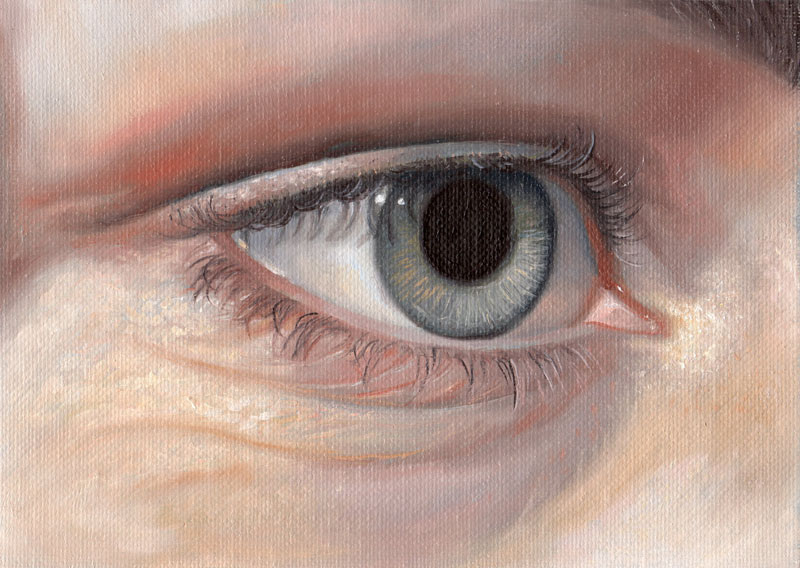
#7. Meet art collectors at art museums
This idea comes from Brainard Carey (you can find him on YouTube and at the Praxis Center). Buy a membership at your local art museum to meet art patrons at special events and show previews. Ask them about their interests & invite them to your studio to build a relationship with them without asking for sales! This builds trust and friendship. They’ll want to buy from you when you establish a relationship with them.
Other important things to consider for your art business:
- List building
- Publicity efforts
- Social media growth
- Connection and service to others
- Underpromise and Overdeliver
- Ask for reviews or testimonials from your past collectors and fans to build more trust
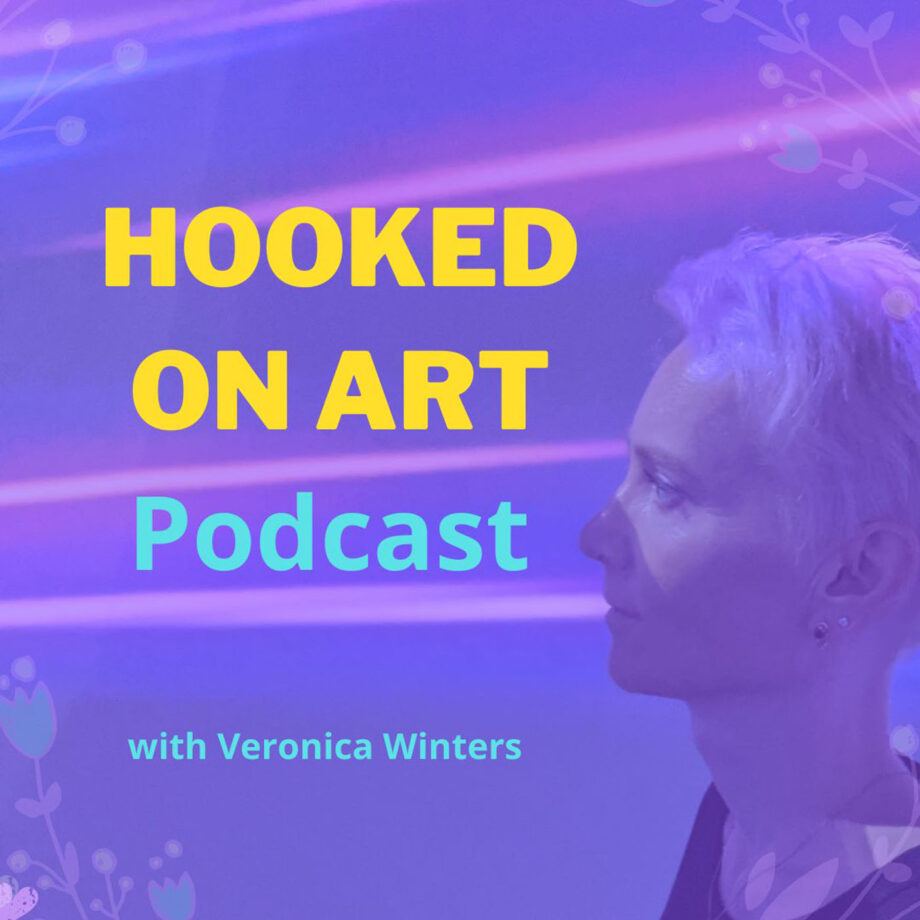
Apple: https://podcasts.apple.com/gb/podcast/hooked-on-art-podcast/id1578503310
Spotify: https://open.spotify.com/show/601b3tkDmePVnsFPCRrDTm?si=cded1d145ffd4c7a
Learn from your mistakes
Learn from your mistakes not to get discouraged and quit, rather to be able to pivot and adjust your strategies. The case of Netflix is clear. Once a disruptor and innovator no more. Life changes constantly and we must be able to adapt and change with it.
Pick a strategy that’s easy to implement in accordance with your personality at first. Then add another strategy to your action. You must take action on 1-3 strategies to see the results. You need to implement them. Without taking action, it’s just the information without its proper use. Good luck and let me know what you think of this article by messaging me on Facebook or Instagram. 🙂
P.S. Study great art marketers of our time – Jeff Koons, Kinkade, Warhol.
Art supplies sold on Amazon:
- Drawing pad, bristol vellum
- Kneaded eraser
- koh -i-noor drawing paper, colored pencil
- Tombow mono eraser
- Drawing fixative
- Sennelier fixative for charcoal and pencil has a super fine spray mist, matte, high-quality
- Gamvar varnish for oil paintings, satin
- Brush for varnishing oil paintings
- Color Wheel
- Canson Colorline drawing paper is available in many colors and various thickness. You might find better choices at art supply online retailers
- Molotow metallic marker, gold
- How to color like an artist, coloring book for children and adults
- The colored pencil manual, art instruction book
You can find me here:
Because you’re interested in art sales, you might be interested in this article and video here: https://veronicasart.com/the-quality-of-your-art-makes-no-difference-in-sales-what-you-must-know-as-an-artist-selling-art/
